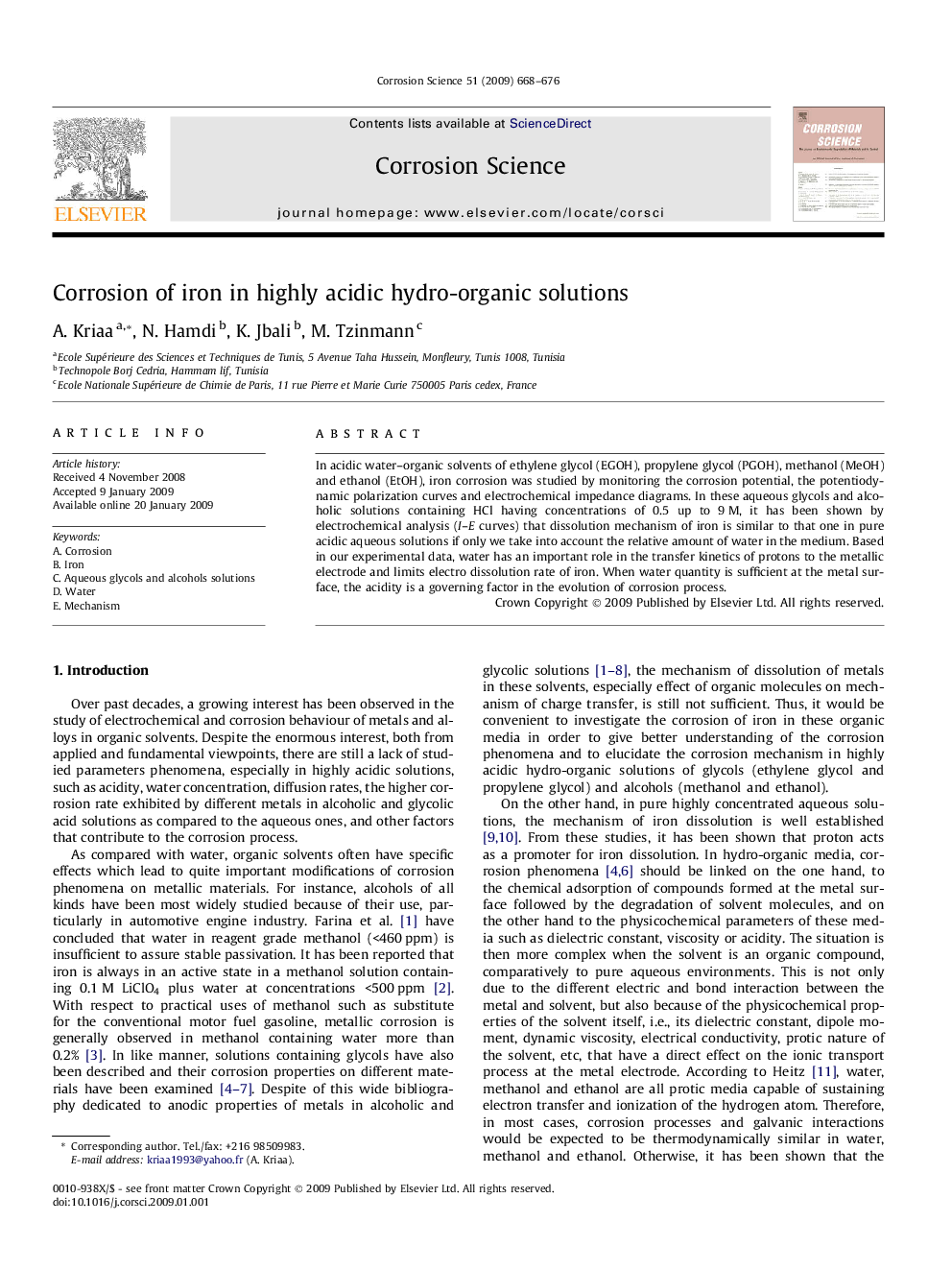| Article ID | Journal | Published Year | Pages | File Type |
|---|---|---|---|---|
| 1470475 | Corrosion Science | 2009 | 9 Pages |
In acidic water–organic solvents of ethylene glycol (EGOH), propylene glycol (PGOH), methanol (MeOH) and ethanol (EtOH), iron corrosion was studied by monitoring the corrosion potential, the potentiodynamic polarization curves and electrochemical impedance diagrams. In these aqueous glycols and alcoholic solutions containing HCl having concentrations of 0.5 up to 9 M, it has been shown by electrochemical analysis (I–E curves) that dissolution mechanism of iron is similar to that one in pure acidic aqueous solutions if only we take into account the relative amount of water in the medium. Based in our experimental data, water has an important role in the transfer kinetics of protons to the metallic electrode and limits electro dissolution rate of iron. When water quantity is sufficient at the metal surface, the acidity is a governing factor in the evolution of corrosion process.
